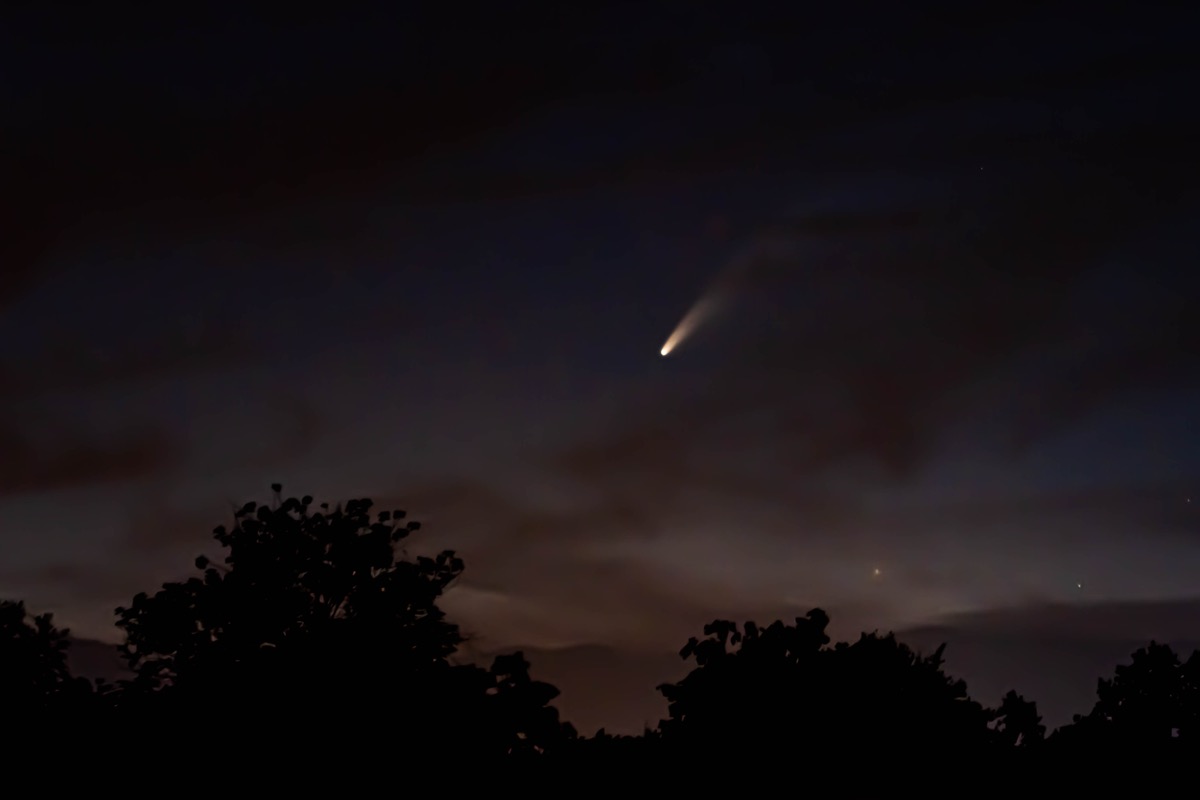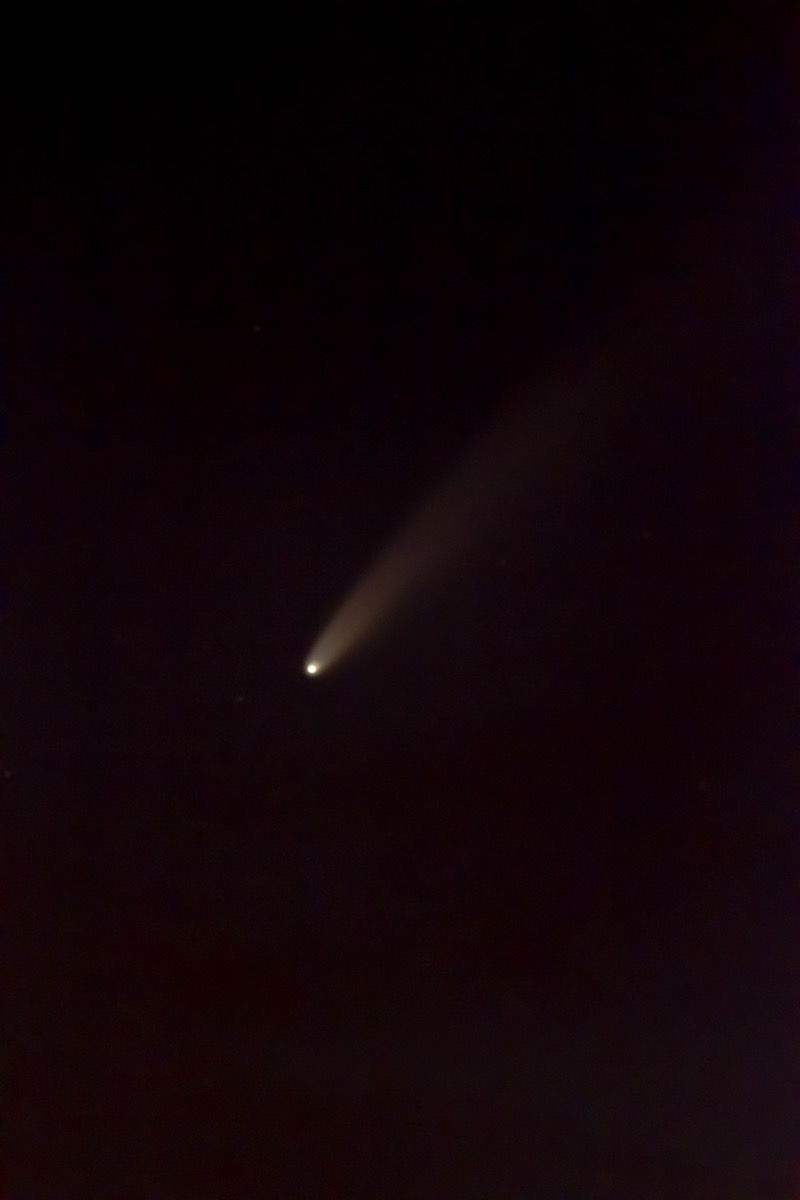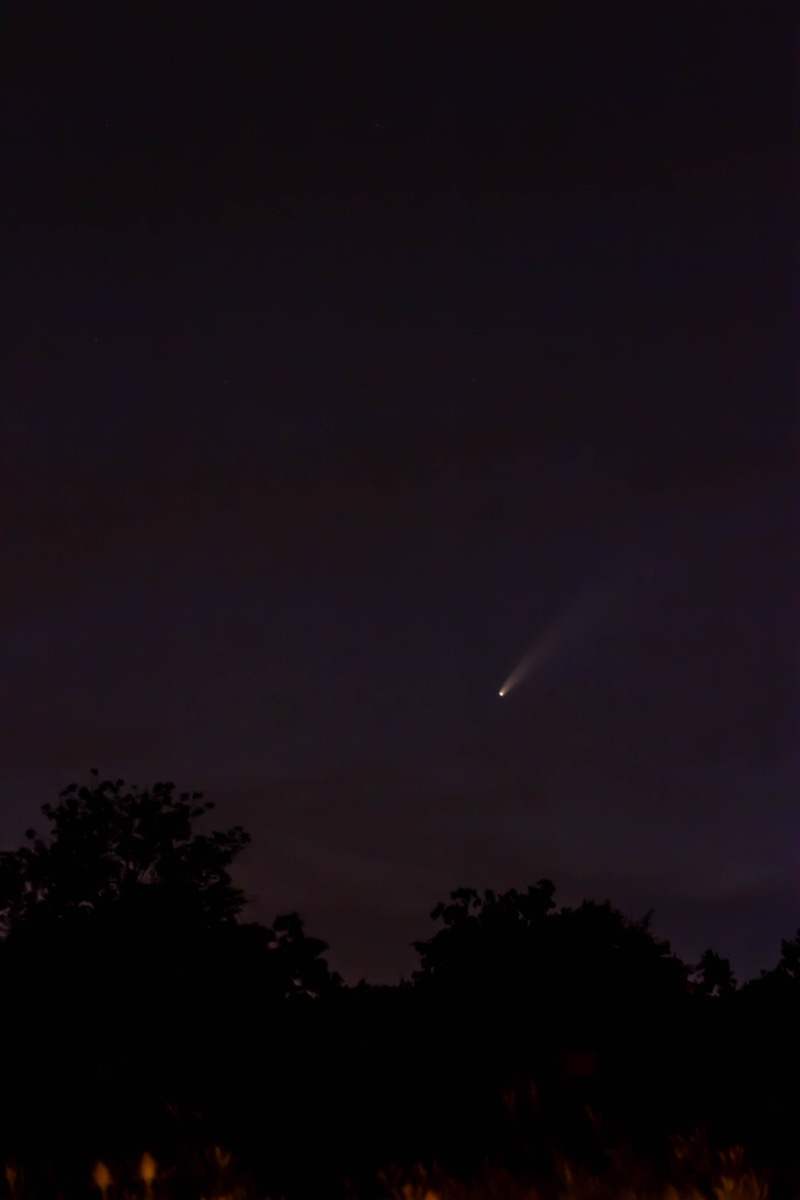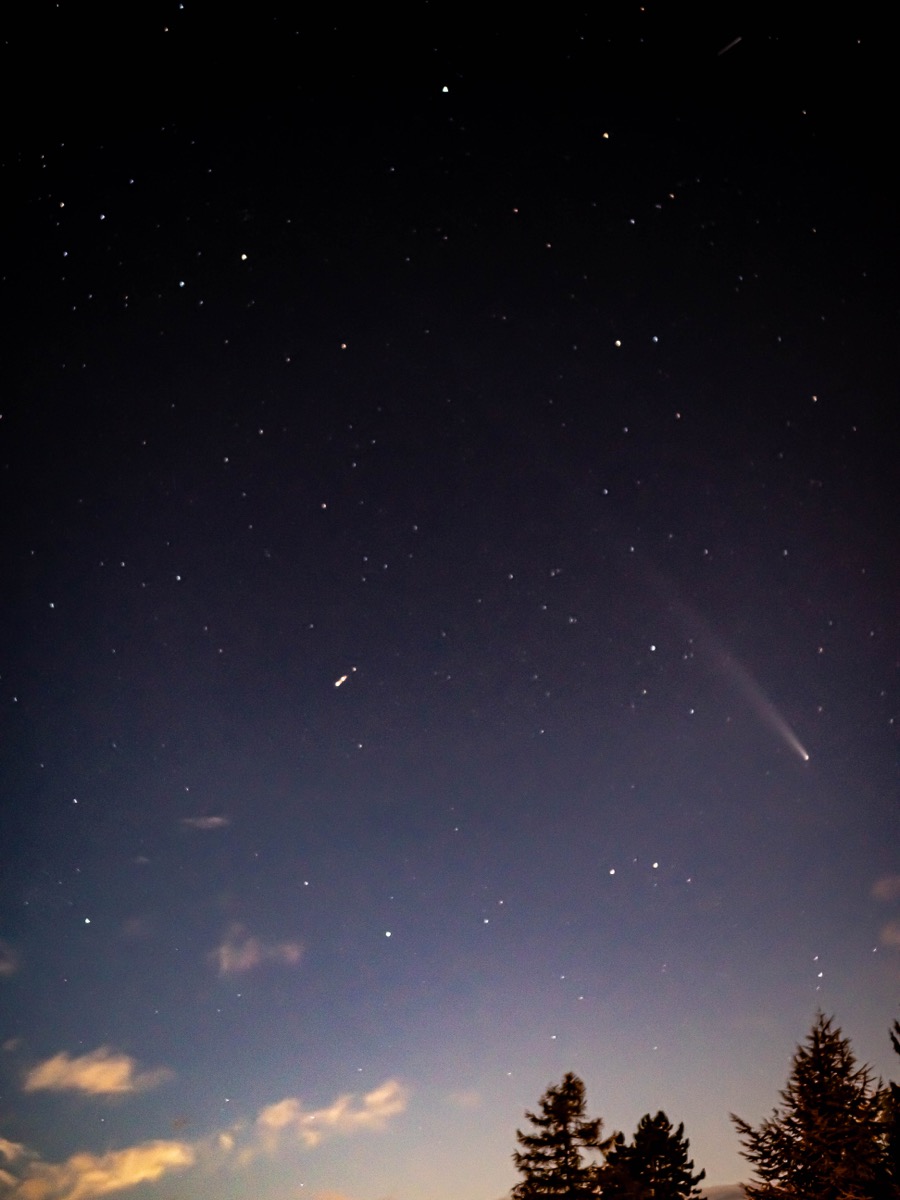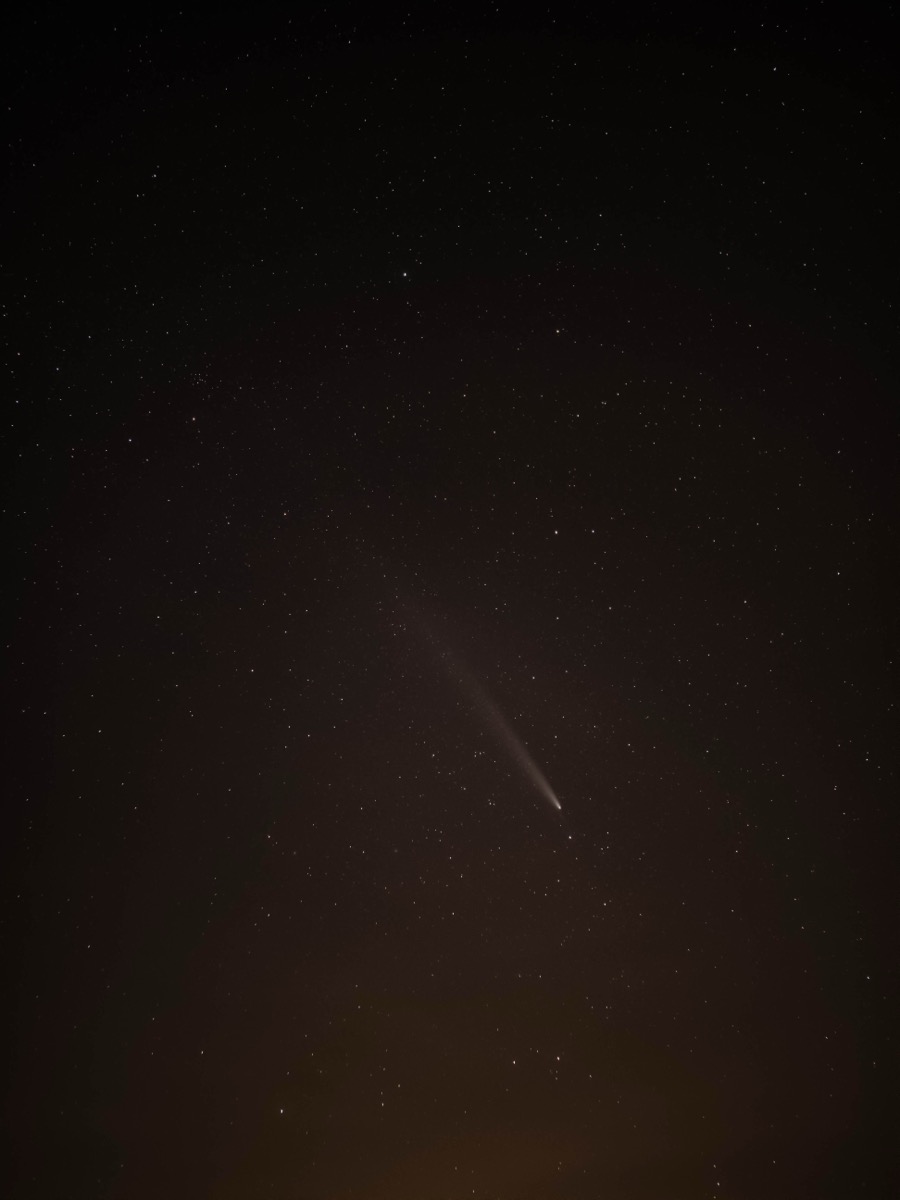Comets are fascinating and mysterious celestial objects traveling through the solar system. Here’s a summary of their main features and important aspects:
Composition
Comets are primarily composed of ice, dust, and rock. The nucleus of a comet is a solid clump of these materials, often compared to a “dirty snowball.” As a comet approaches the Sun, the heat causes the ice to sublimate, releasing gas and dust that form the comet’s coma and tail.
This gas and dust create a diffuse atmosphere around the nucleus and a tail that always points away from the Sun due to the pressure of the solar wind.
Orbit
Comets generally originate from the distant regions of the solar system, such as the Oort Cloud or the Kuiper Belt.
History
Comets have been observed and recorded since antiquity, often associated with omens or significant events.
Missions like Giotto (which flew past Halley’s Comet), Stardust (which collected samples from Comet Wild 2), and Rosetta (which followed Comet 67P/Churyumov–Gerasimenko for years) have provided valuable data on cometary composition and structure.
Comet NEOWISE C/2020 F3
The NEOWISE comet (C/2020 F3) was one of the most spectacular discoveries in 2020. Here are the key highlights:
Discovery
NEOWISE was discovered on March 27, 2020, by NASA’s NEOWISE space telescope. The name comes from “Near-Earth Object Wide-field Infrared Survey Explorer.”
Orbit and trajectory
It has a very elliptical orbit that brought it close to the Sun before heading back toward the outer solar system. In July 2020, it reached perihelion (its closest approach to the Sun).
Visibility from Earth
NEOWISE became visible to the naked eye from many parts of Earth in July 2020. It displayed a bright tail and a diffuse coma, making it a striking object.
Future return
After its 2020 appearance, NEOWISE is receding and won’t return to the inner solar system for thousands of years.
Comet C/2023 A3 (Tsuchinshan-ATLAS)
Comet C/2023 A3 is a periodic comet discovered in January 2023 by the “Asteroid Terrestrial-impact Last Alert System” (ATLAS).
It was detected by astronomers from the Tsuchinshan Observatory in the Xinjiang province of China.
